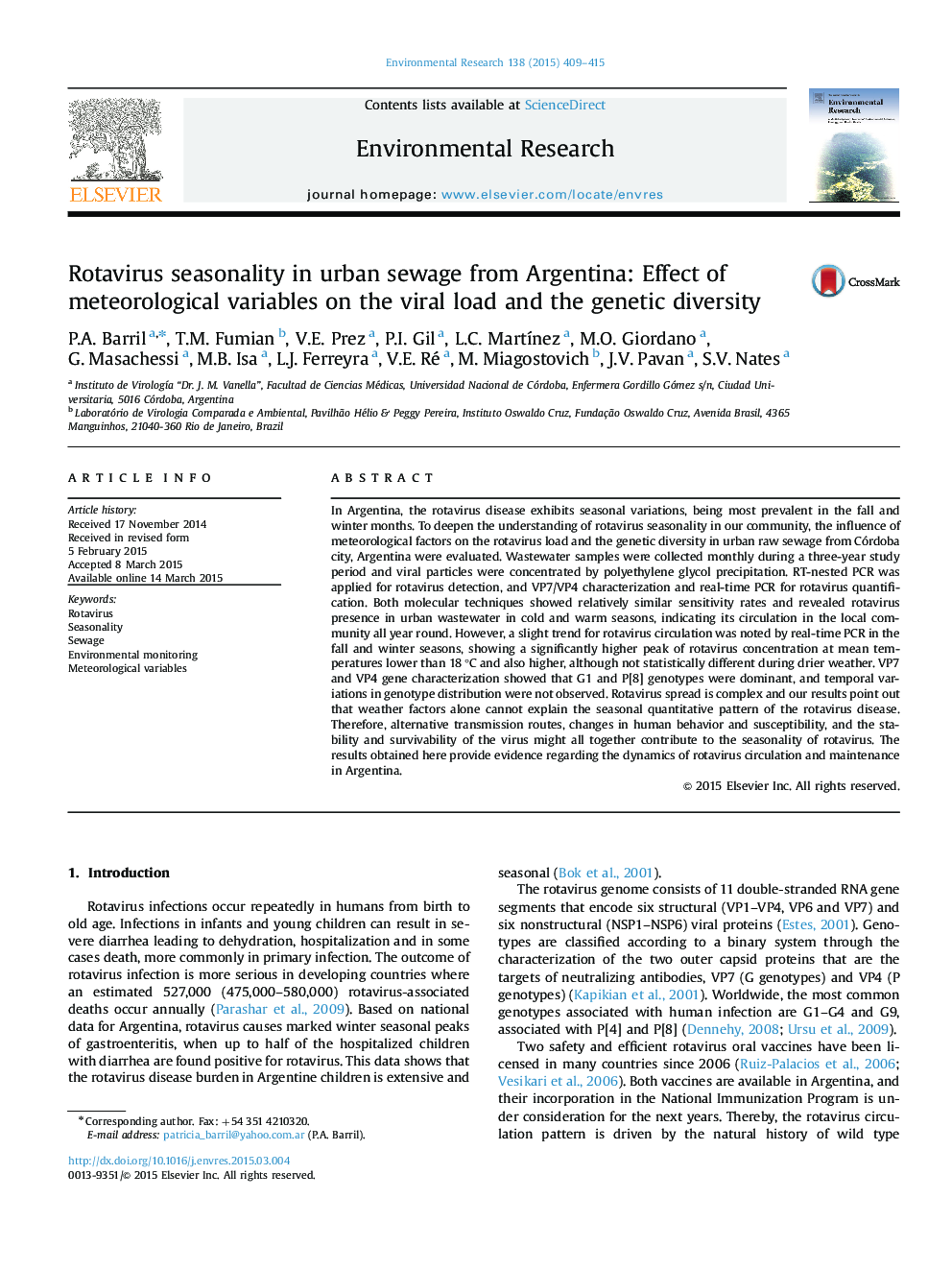| کد مقاله | کد نشریه | سال انتشار | مقاله انگلیسی | نسخه تمام متن |
|---|---|---|---|---|
| 4469790 | 1622563 | 2015 | 7 صفحه PDF | دانلود رایگان |
• Rotavirus circulates in the community all year-round.
• A trend for rotavirus circulation is noted during the colder and drier seasons.
• Significantly higher peaks of rotavirus concentration occur at mean temperatures lower than 18 °C.
• Temporal variations in genotype distribution were not observed.
In Argentina, the rotavirus disease exhibits seasonal variations, being most prevalent in the fall and winter months. To deepen the understanding of rotavirus seasonality in our community, the influence of meteorological factors on the rotavirus load and the genetic diversity in urban raw sewage from Córdoba city, Argentina were evaluated. Wastewater samples were collected monthly during a three-year study period and viral particles were concentrated by polyethylene glycol precipitation. RT-nested PCR was applied for rotavirus detection, and VP7/VP4 characterization and real-time PCR for rotavirus quantification. Both molecular techniques showed relatively similar sensitivity rates and revealed rotavirus presence in urban wastewater in cold and warm seasons, indicating its circulation in the local community all year round. However, a slight trend for rotavirus circulation was noted by real-time PCR in the fall and winter seasons, showing a significantly higher peak of rotavirus concentration at mean temperatures lower than 18 °C and also higher, although not statistically different during drier weather. VP7 and VP4 gene characterization showed that G1 and P[8] genotypes were dominant, and temporal variations in genotype distribution were not observed. Rotavirus spread is complex and our results point out that weather factors alone cannot explain the seasonal quantitative pattern of the rotavirus disease. Therefore, alternative transmission routes, changes in human behavior and susceptibility, and the stability and survivability of the virus might all together contribute to the seasonality of rotavirus. The results obtained here provide evidence regarding the dynamics of rotavirus circulation and maintenance in Argentina.
Journal: Environmental Research - Volume 138, April 2015, Pages 409–415
